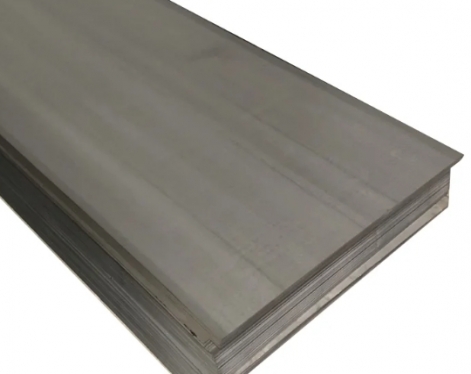Octg casing is a key piece of equipment. It is installed to standardize the oil well production process. Its main function is to provide fixation and prevent well wall collapse. The quality of petroleum octg casing directly affects the production and safety of oil wells. Therefore, petroleum octg casing inspection is essential.
1. Preparation before inspection
The preparation work before the inspection of petroleum octg casing is very important. These preparations include:
1.1 Prepare test equipment
First of all, we must prepare the inspection equipment. The test equipment must be highly accurate equipment certified by the state to meet the accuracy and standardization of the inspection.
1.2 Install inspection equipment
Install instruments and equipment in their proper locations to ensure they operate correctly.
1.3 Prepare octg casing
The octg casing should be cleaned before inspection to better detect surface defects of the octg casing.
1.4 Determine inspection standards
Before inspection, the inspection standards should be clarified and appropriate inspection procedures and inspection standards should be formulated to ensure the accuracy and comprehensiveness of the inspection results.

2. Inspection process
When inspecting petroleum octg casing, it is usually necessary to strictly abide by the following inspection procedures:
2.1 Check appearance
First, check the appearance of the octg casing, such as whether there are corrosion, cracks, deformation and other defects on the surface of the octg casing.
2.2 Check size
Check whether the dimensions of the octg casing, including diameter, length, wall thickness and other parameters, meet the requirements.
2.3 Waveform defect detection
Waveform defect detection refers to detecting the waveform of octg casing through appropriate instruments and equipment to detect whether there are defects on the surface of octg casing.
2.4 Ultrasonic flaw detection
Ultrasonic flaw detection refers to the use of appropriate inspection instruments to transmit ultrasonic waves to the inner wall of the octg casing through the probe to detect whether there are defects inside the octg casing.
2.5 Magnetic particle inspection
Magnetic particle inspection refers to spraying magnetic material (magnetic powder) on the surface of the octg casing, and then checking whether there is any place where the magnetic powder accumulates to determine whether there are defects on the surface of the octg casing.
3. Suggestions
After the above inspection process, the test results should be accurate and reliable. Based on the test results, the following recommendations can be made for oil and casing:
Conduct a comprehensive analysis of the oil and casing test results to determine whether the oil and casing meet the requirements for safe production. Provide corresponding maintenance measures and suggestions for discovered oil and casing defects to ensure the production and safety of oil wells.
4 Conclusion
Petroleum octg casing is one of the most critical components in oil wells. Its quality directly affects the production and safety of oil wells. Through rigorous and scientific petroleum octg casing inspection workflow, defects in octg casing can be better discovered and the safety and efficiency of oil well production can be improved
1. Preparation before inspection
The preparation work before the inspection of petroleum octg casing is very important. These preparations include:
1.1 Prepare test equipment
First of all, we must prepare the inspection equipment. The test equipment must be highly accurate equipment certified by the state to meet the accuracy and standardization of the inspection.
1.2 Install inspection equipment
Install instruments and equipment in their proper locations to ensure they operate correctly.
1.3 Prepare octg casing
The octg casing should be cleaned before inspection to better detect surface defects of the octg casing.
1.4 Determine inspection standards
Before inspection, the inspection standards should be clarified and appropriate inspection procedures and inspection standards should be formulated to ensure the accuracy and comprehensiveness of the inspection results.

2. Inspection process
When inspecting petroleum octg casing, it is usually necessary to strictly abide by the following inspection procedures:
2.1 Check appearance
First, check the appearance of the octg casing, such as whether there are corrosion, cracks, deformation and other defects on the surface of the octg casing.
2.2 Check size
Check whether the dimensions of the octg casing, including diameter, length, wall thickness and other parameters, meet the requirements.
2.3 Waveform defect detection
Waveform defect detection refers to detecting the waveform of octg casing through appropriate instruments and equipment to detect whether there are defects on the surface of octg casing.
2.4 Ultrasonic flaw detection
Ultrasonic flaw detection refers to the use of appropriate inspection instruments to transmit ultrasonic waves to the inner wall of the octg casing through the probe to detect whether there are defects inside the octg casing.
2.5 Magnetic particle inspection
Magnetic particle inspection refers to spraying magnetic material (magnetic powder) on the surface of the octg casing, and then checking whether there is any place where the magnetic powder accumulates to determine whether there are defects on the surface of the octg casing.
3. Suggestions
After the above inspection process, the test results should be accurate and reliable. Based on the test results, the following recommendations can be made for oil and casing:
Conduct a comprehensive analysis of the oil and casing test results to determine whether the oil and casing meet the requirements for safe production. Provide corresponding maintenance measures and suggestions for discovered oil and casing defects to ensure the production and safety of oil wells.
4 Conclusion
Petroleum octg casing is one of the most critical components in oil wells. Its quality directly affects the production and safety of oil wells. Through rigorous and scientific petroleum octg casing inspection workflow, defects in octg casing can be better discovered and the safety and efficiency of oil well production can be improved









